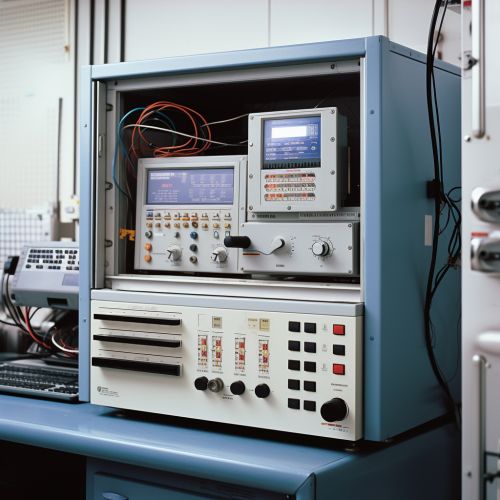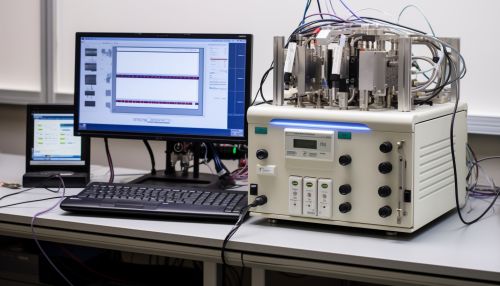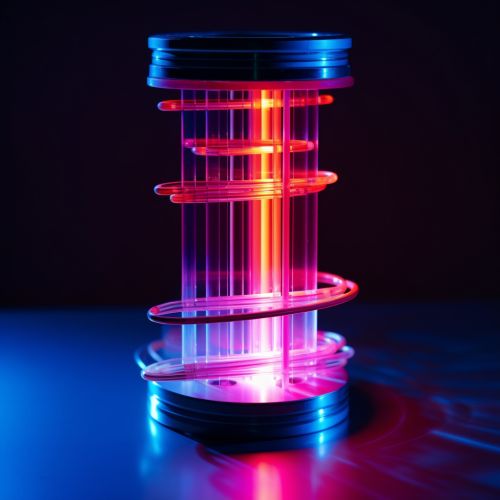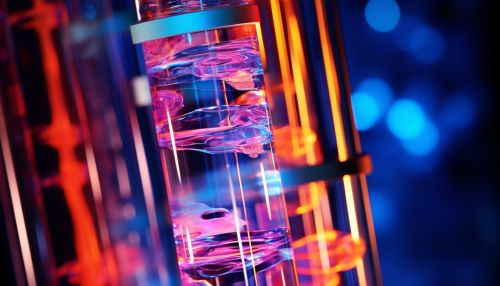Gas Chromatography
Introduction
Gas chromatography (GC) is a common type of chromatography used in analytical chemistry for separating and analyzing compounds that can be vaporized without decomposition. This technique is typically used for testing the purity of a particular substance, or separating the different components of a mixture. In some situations, GC may help in identifying a compound.
Principle
The basic principle of gas chromatography is the partitioning of molecules between a stationary and a mobile phase. The stationary phase is a high boiling point liquid that is coated onto the surface of an inert solid or inside a capillary tube. The mobile phase is an inert gas such as helium, nitrogen, or hydrogen.
Components of a Gas Chromatograph
A gas chromatograph is composed of several major components: the carrier gas system, the injector, the column, the detector, and the data handling system.
Carrier Gas System
The carrier gas must be chemically inert and not react with the sample or the column. Commonly used gases include helium, nitrogen, and hydrogen. The choice of carrier gas is often dependent on the type of detector used.
Injector
The injector serves to introduce the sample into the continuous flow of carrier gas. The injector must be capable of withstanding high temperatures to facilitate the rapid vaporization of the sample.
Column
The column is where the components of the sample get separated. The column is typically a long, thin tube with the stationary phase adhering to the inner wall. Two types of columns are used: packed and capillary.
Detector
The detector generates a signal proportional to the amount of sample component reaching it. It responds to a physical or chemical property of the vaporized sample, and produces an electronic signal that can be amplified and recorded.
Data Handling System
The data handling system, or the integrator, serves to record, integrate, and display the signal from the detector in the form of a chromatogram.
Types of Gas Chromatography
There are several types of gas chromatography, including gas-solid chromatography (GSC), gas-liquid chromatography (GLC), and multidimensional gas chromatography (MDGC).
Gas-Solid Chromatography
In gas-solid chromatography, the stationary phase is a solid. The separation of components is based on their differing degrees of adsorption on the solid surface.
Gas-Liquid Chromatography
In gas-liquid chromatography, the stationary phase is a high boiling point liquid that is coated onto the surface of an inert solid or inside a capillary tube.
Multidimensional Gas Chromatography
Multidimensional gas chromatography (MDGC) is a powerful tool for separating and identifying complex mixtures of chemicals.
Applications of Gas Chromatography
Gas chromatography is used in many fields such as pharmaceuticals, environmental monitoring, industrial hygiene, forensics, food and beverage analysis, and petrochemicals.


Limitations and Challenges
Despite its many advantages, gas chromatography also has some limitations and challenges. These include the need for volatile samples, difficulty in analyzing thermally unstable compounds, and the inability to determine absolute molecular weights.
Future of Gas Chromatography
Advancements in technology and the development of new materials and techniques are expected to overcome some of the limitations of gas chromatography and expand its applications.


